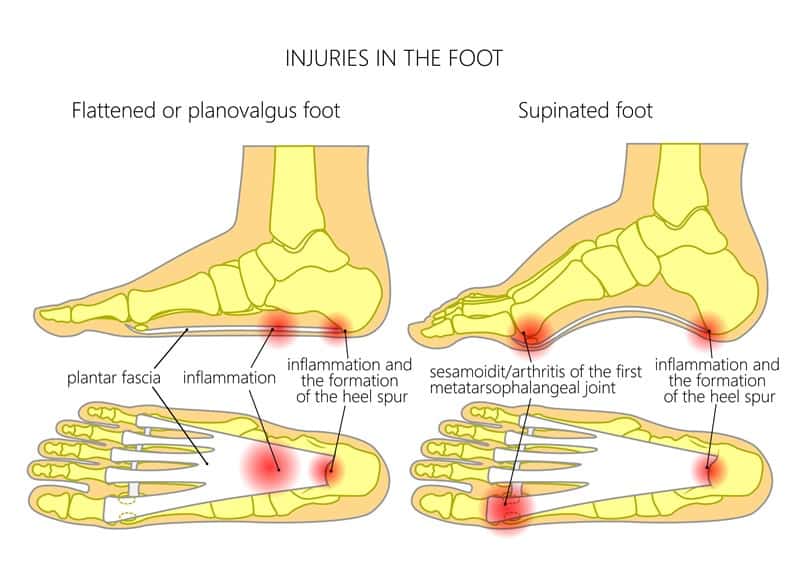The simplest way to explain PF is simply that it is a symptom, not a cause. The plantar fascia is a fibrous ligamentous tissue that runs from the heel, across the bottom of the foot, extending to the big toe. If there are underlying structural problems with an individual’s foot or feet, it can cause the fascia to become damaged microscopically. The result is a common condition called plantar fasciitis, which is, simply put, injury to the plantar fascia, causing it to become inflamed and irritated. The suffix -itis means inflamed. Any ailment with the suffix -itis attached means it’s an inflammatory condition. Inflammation can be caused by things, but the one characteristic, regardless of the cause, is “It hurts! ” There are approximately two million Americans per year who seek some type of medical or pain relief treatment for plantar fasciitis. One of the things I have found to be most prevalent is that there are several types of underlying foot problems leading to PF. Breakdown in the structure of the foot joints occurs first; then, that leads to pain and discomfort of the fascia.
There are generally two components involved in PF: inflammatory and mechanical (structural). Here’s the key to,understanding the process of repair regarding the treatment of PF: The mechanical issue usually comes first, not the inflammatory. Primarily, in many of my PF cases, it’s only the inflammatory portion that has been dealt with. This leaves the mechanical issue unresolved. Steroid injections can last from 2–4 weeks, up to three months on average; however, once these wear off, the pain can return, and the mechanical issue is still there. This treatment cycle will often continue to repeat as the underlying mechanical issue worsens over time. At that point, even pain-relieving medication has very little to no effect. Pain is the symptom, but what caused that pain to begin with? As mentioned earlier, our feet are structurally designed to support our body weight and move us from one place to another. They are mechanical in nature, and their structure is very important to how well they function. Plantar fasciitis involves three components of our anatomy that need to be addressed: muscles, connective tissue, and bones/joints.
These three components of our feet and ankles need to be working together harmoniously in order for everything to eventually get better. It is here where we will start our assessment. If any one of these areas is compromised, it won’t be long before the other two will follow.
We recommend chiropractic adjustments, scar tissue therapy, and gel inserts for our plantar fasciitis/ foot injury patients. We feel these mold the best and adapt to the patient’s feet naturally, easing adaptation to the supportive changes. Please click on the link below to soul insole, the company we feel offers the best overall product to provide a quality gel insert that is reasonably priced. After applying a few adjustments, we like to apply the inserts to help hold the correction.
